7 巻, 1 号
選択された号の論文の18件中1~18を表示しています
- |<
- <
- 1
- >
- >|
Review Articles
-
2014 年 7 巻 1 号 p. 7-10
発行日: 2014年
公開日: 2014/03/26
[早期公開] 公開日: 2014/02/04PDF形式でダウンロード (259K) -
2014 年 7 巻 1 号 p. 11-16
発行日: 2014年
公開日: 2014/03/26
[早期公開] 公開日: 2014/03/15PDF形式でダウンロード (282K)
Original Articles
-
2014 年 7 巻 1 号 p. 17-20
発行日: 2014年
公開日: 2014/03/26
[早期公開] 公開日: 2014/02/04PDF形式でダウンロード (584K) -
2014 年 7 巻 1 号 p. 21-27
発行日: 2014年
公開日: 2014/03/26
[早期公開] 公開日: 2014/02/04PDF形式でダウンロード (428K) -
2014 年 7 巻 1 号 p. 28-33
発行日: 2014年
公開日: 2014/03/26
[早期公開] 公開日: 2014/02/04PDF形式でダウンロード (345K) -
2014 年 7 巻 1 号 p. 34-39
発行日: 2014年
公開日: 2014/03/26
[早期公開] 公開日: 2014/02/28PDF形式でダウンロード (630K) -
2014 年 7 巻 1 号 p. 40-45
発行日: 2014年
公開日: 2014/03/26
[早期公開] 公開日: 2014/02/28PDF形式でダウンロード (453K) -
2014 年 7 巻 1 号 p. 46-51
発行日: 2014年
公開日: 2014/03/26
[早期公開] 公開日: 2014/02/28PDF形式でダウンロード (475K) -
2014 年 7 巻 1 号 p. 52-55
発行日: 2014年
公開日: 2014/03/26
[早期公開] 公開日: 2014/03/15PDF形式でダウンロード (912K)
Case Reports
-
2014 年 7 巻 1 号 p. 56-59
発行日: 2014年
公開日: 2014/03/26
[早期公開] 公開日: 2014/02/04PDF形式でダウンロード (732K) -
2014 年 7 巻 1 号 p. 60-63
発行日: 2014年
公開日: 2014/03/26
[早期公開] 公開日: 2014/02/04PDF形式でダウンロード (1123K) -
2014 年 7 巻 1 号 p. 64-67
発行日: 2014年
公開日: 2014/03/26
[早期公開] 公開日: 2014/02/04PDF形式でダウンロード (829K) -
2014 年 7 巻 1 号 p. 68-71
発行日: 2014年
公開日: 2014/03/26
[早期公開] 公開日: 2014/02/04PDF形式でダウンロード (976K) -
2014 年 7 巻 1 号 p. 72-74
発行日: 2014年
公開日: 2014/03/26
[早期公開] 公開日: 2014/02/04PDF形式でダウンロード (676K) -
2014 年 7 巻 1 号 p. 75-78
発行日: 2014年
公開日: 2014/03/26
[早期公開] 公開日: 2014/02/04PDF形式でダウンロード (875K) -
2014 年 7 巻 1 号 p. 79-82
発行日: 2014年
公開日: 2014/03/26
[早期公開] 公開日: 2014/02/04PDF形式でダウンロード (1134K) -
2014 年 7 巻 1 号 p. 83-86
発行日: 2014年
公開日: 2014/03/26
[早期公開] 公開日: 2014/02/04PDF形式でダウンロード (1319K) -
2014 年 7 巻 1 号 p. 87-92
発行日: 2014年
公開日: 2014/03/26
[早期公開] 公開日: 2014/02/04PDF形式でダウンロード (781K)
- |<
- <
- 1
- >
- >|
